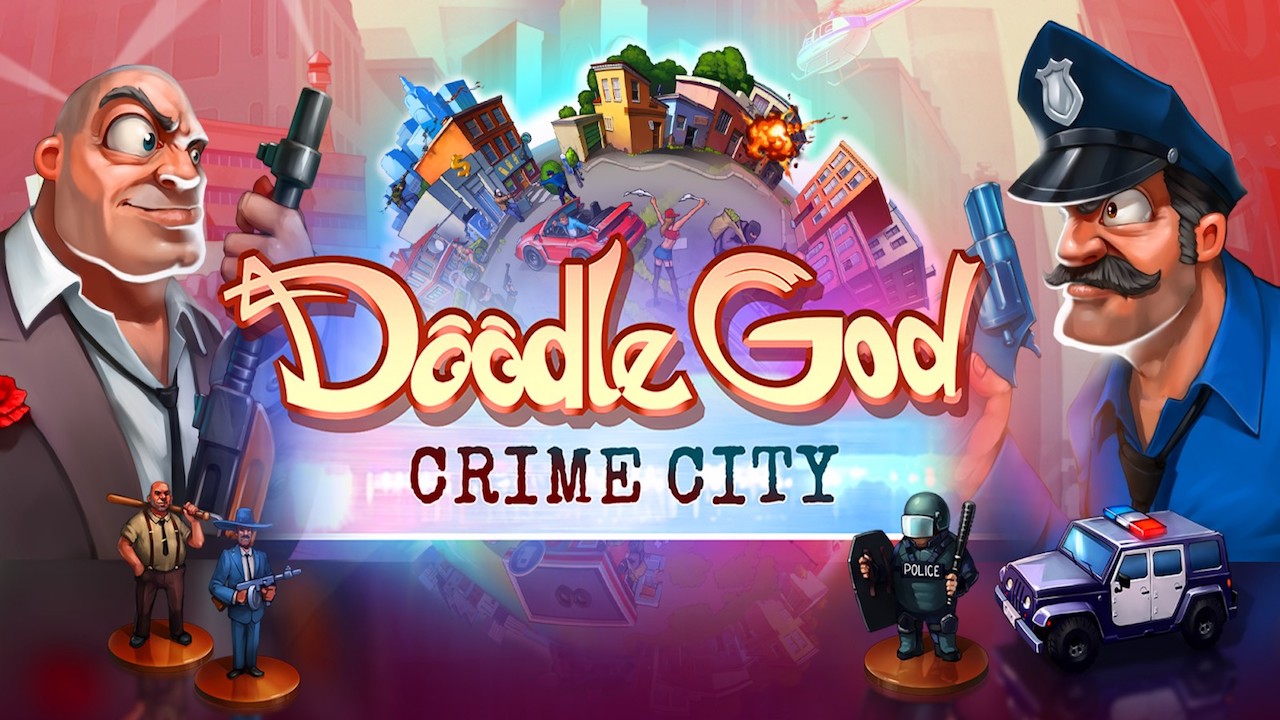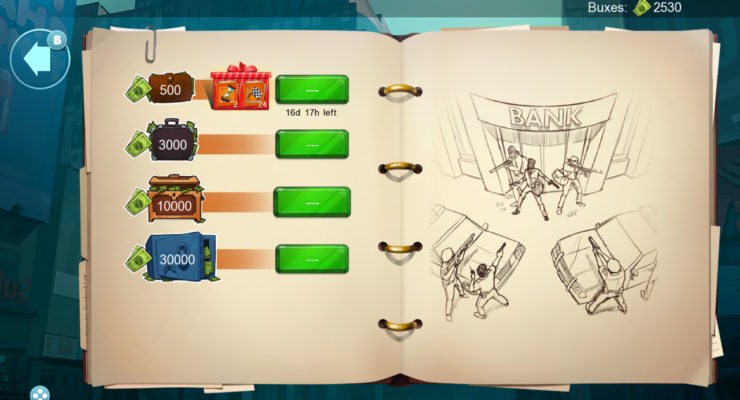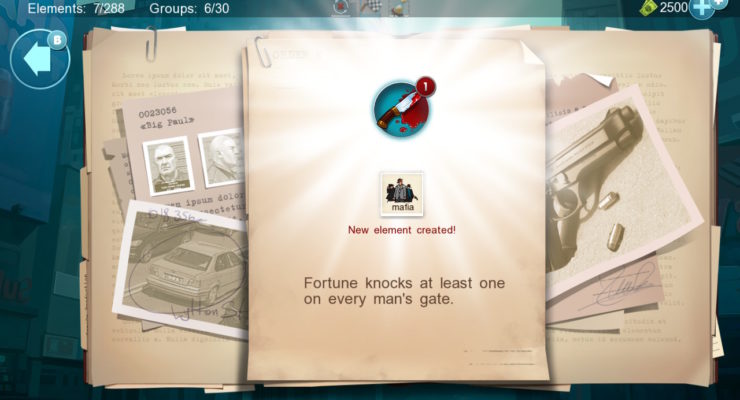Doodle God: Crime City is another take on the popular Doodle God mobile game. Whilst it manages to innovate the series, it is held back by the same problems as the original: microtransactions. Whilst additional paid add-ons aren’t necessarily a bad thing, they are here… Paid add-ons like in-game currency should never be implemented into a console game that was originally a mobile game.
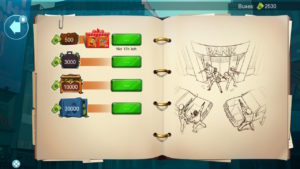
Microtransactions in Doodle God: Crime City offer an in-game currency called “bucks” that can be used to buy more hints or even spin the wheel of luck at your own desire (this will be discussed at length later). These paid add-ons can, of course, be avoided with the help of the internet, but they shouldn’t be there to begin with (the internet offers a full list of possible element combinations – will be discussed later – rather than using hints).
For those unaware of the Doodle God series, it consists of puzzle games, each of which surrounds a basic theme. In the case of Doodle God: Crime City, it surrounds the city and life of crime. It is not a typical puzzle game, though, as you are tasked with combining elements from a variety of different groups. When you combine these elements, it will create something new. For example, combining the elements, city and organized crime, you will get a mafia. What’s great about these games is there are a wide range of elements to combine, and especially with Doodle God: Crime City. In Crime City alone, there are thirty groups of elements comprising two hundred and eighty-eight total elements. A big part of the challenge with the game comes down to figuring out the combinations – that’s also the fun of the game. Whilst the hint system will help relieve any problems if you get stuck, it is still recommended to keep trying new combinations – each element can be made several different ways! There are a few choices when it comes to receiving a hint: random element reaction, showing two groups where elements may react, and showing an element that can be created from existing ones.
Whilst the overall mechanics of combining elements might sound pointless at first, fear not, as there is actually a purpose behind it. There are two different modes to choose from: Campaign and City. Each offers vastly different sets of objectives, which is refreshing.
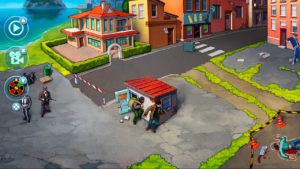
City mode has you tasked with figuring out all the possible elements and groups in the game with the intent of filling up the city with all its different objects, people, and buildings. And this isn’t done poorly either, as the developers took the time to carefully draw and animate what is a beautifully done city. It reminds me a bit of the 2000s cartoon era, and not in a bad way. After each element is found, it is added to the city map – it was a cool gimmick that made it feel rewarding to figure out the combinations.
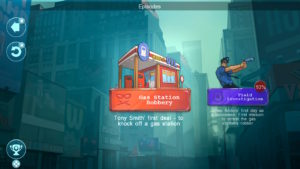
Campaign mode consists of six different episodes. Each of which has you tasked as either a criminal or cop depending on the objective. These episodes differ to the city mode, as the goal is to figure out the necessary elements needed to solve/commit the crime. I had quite a lot of fun with this mode, as it was a unique take for the series, but I did have some criticisms. It felt very short and left me wanting more. A longer campaign would’ve gone a long way, or even adding some replay incentive – there is no reason to come back after finishing the game. There is also an achievements section, which some might associate with replaying, but it really isn’t… I was earning them with no effort, just progressing through the different modes. Despite the campaign being short, it does run well, just as the City mode does. It runs well, especially in handheld mode. In fact, I spent 90% of my time with the game in handheld.
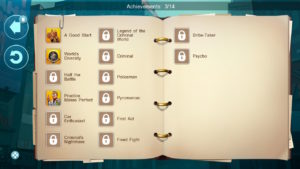
In terms of controls, it is about what you’d expect… it functions well in handheld mode, using the same button inputs, as the pro controller. Although, one interesting tidbit was that it is touch screen compatible – one of the most worthy features of this title. After learning of this control scheme, though, you might be asking yourself, “Where’s the multiplayer component?,” well, sadly there is none.
Despite the innovations taken with Doodle God: Crime City, I can’t help but feel they held back. Whilst I understand the lack of a multiplayer mode for this sort of game, it is a noticeable omission when placed alongside its short campaign and freemium model. The game is far from perfect, but it takes interesting steps with its City mode, and provides a Doodle God experience like none other, which I can appreciate. Experiencing the world of crime from both a cop and criminal perspective is a good theme and only gives me more hope for the future of the series. Considering its relatively low asking price, it is hard to not recommend the game. That being said, if you aren’t a fan of puzzle games, this won’t change your mind.
Review: Doodle God: Crime City (Nintendo Switch)
Fair
Despite the innovations taken with Doodle God: Crime City, I can’t help but feel they held back. Whilst I understand the lack of a multiplayer mode for this sort of game, it is a noticeable omission when placed alongside its short campaign and freemium model. The game is far from perfect, but it takes interesting steps with its City mode, and provides a Doodle God experience like none other, which I can appreciate. Experiencing the world of crime from both a cop and criminal perspective is a good theme and only gives me more hope for the future of the series. Considering its relatively low asking price, it is hard to not recommend the game. That being said, if you aren’t a fan of puzzle games, this won’t change your mind.

